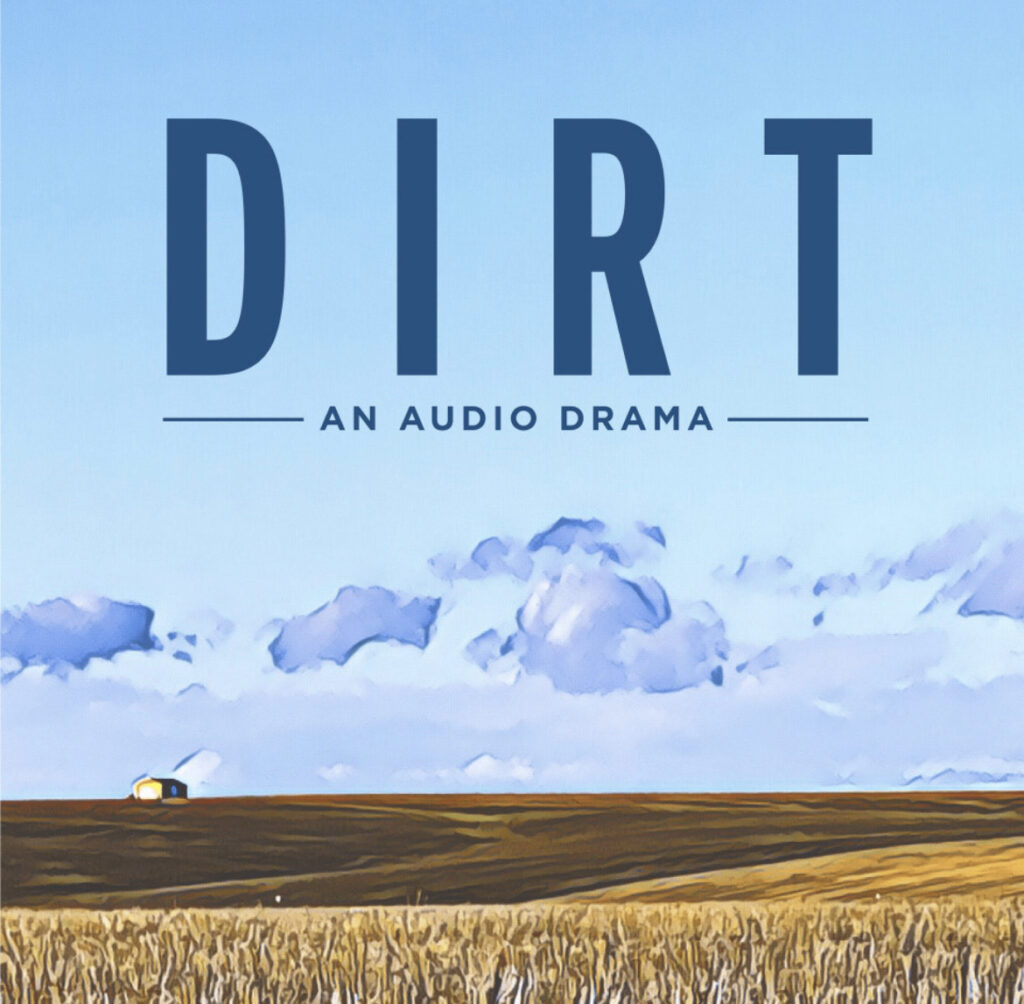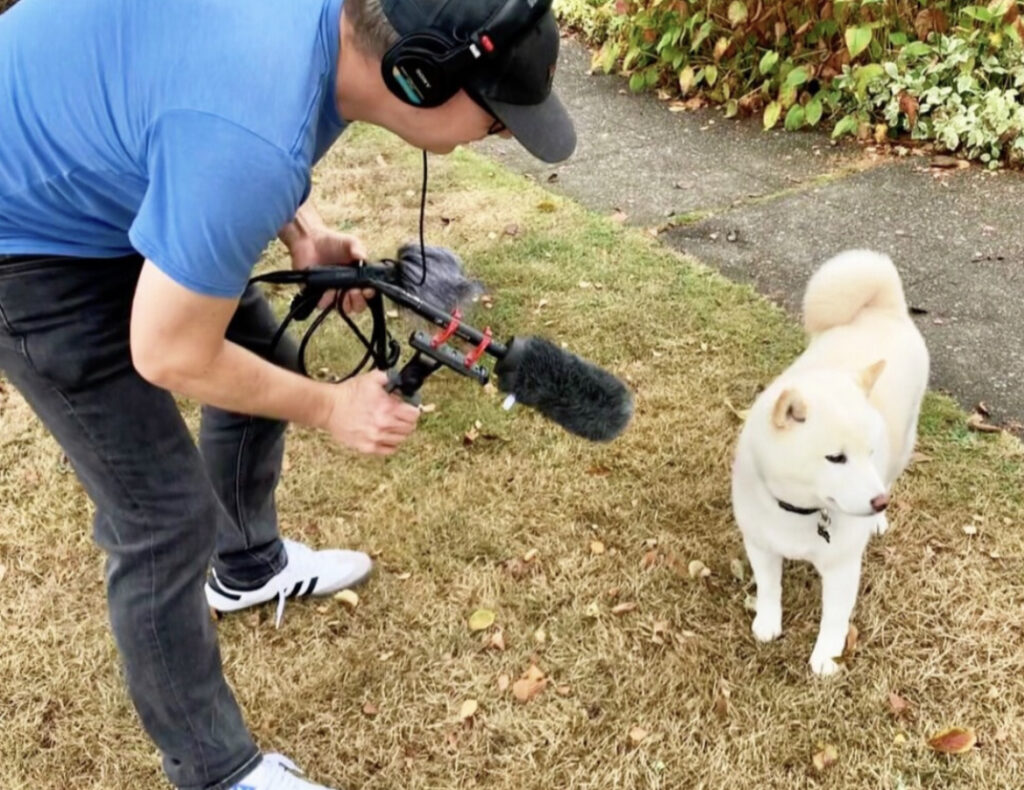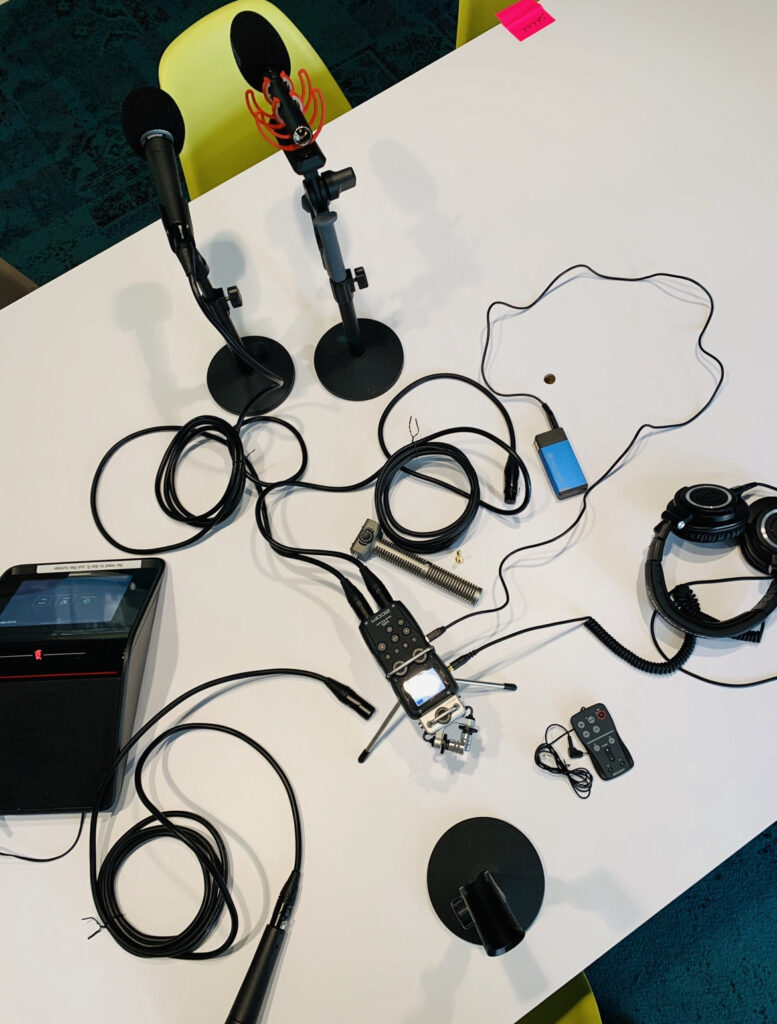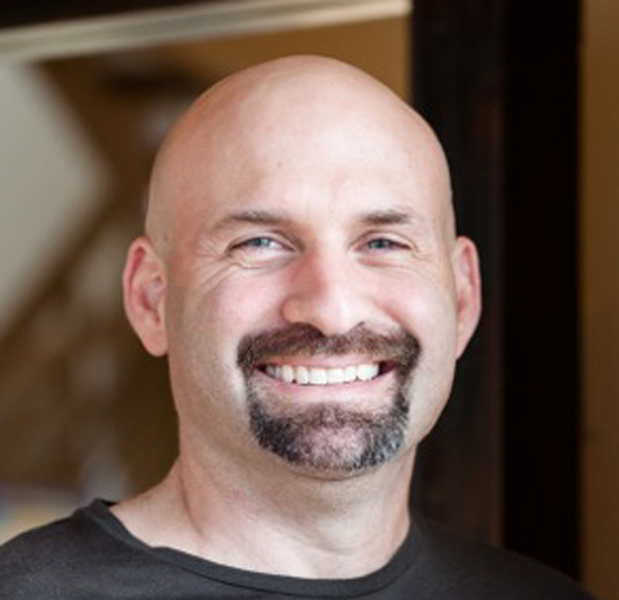Writer, director, producer, and composer Kristopher Kaiyala had to figure out a way to pass on the stories his grandfather told. Or at least let them fuel his inspiration.
Enter “Dirt – An Audio Drama.”
“Dirt” is a scripted, serialized immersive audio podcast. It digs into several genres including sci-fi, mystery, thriller, family drama, with a twist that includes a treasure hunt. It starts off when the main character, Joseph Elo (Kaiyala), receives a strange letter in the mail, from someone who died 30 years ago.

Homespun audio storytelling
It’s Kaiyala’s first formal foray into immersive audio podcasting, but you wouldn’t know it if you tuned in. It was recorded in various locations in and around Washington State, and then produced at his home studio in Seattle. Season 1 consists of six chapters, each less than 30 minutes long.
Kaiyala said that immersive audio storytelling doesn’t have to be out of reach for people who don’t have the means to record and mix in a professional studio.
“To make a compelling immersive audio drama, you don’t need a fancy studio or super expensive gear,” said Kaiyala. “More important is having really good attention to detail…and a good feel for how a scene, or sounds, or conversations should flow.”
Producing an immersive audio podcast requires a great deal of planning, with several production and post-production aspects to consider. Scripting, recording, sound design, environment, and mixing are all rolled into the process of audio storytelling.
Lay the foundation for an immersive experience
Kaiyala described the initial steps of how he laid out each episode.
“When producing an episode, I usually start by recording myself doing a complete read through of all the narration and dialogue, in my own voice,” said Kaiyala. “This gives me an overall sense of episode length, as well as a baseline to start to add background effects and sound design. I can then swap in the final character dialogue as I record and edit it.”
Recording cast dialogue
There are different methods for recording cast members. Some producers record the cast as an ensemble, and others record each cast member individually. Each presents its own set of rewards and challenges.
With “Dirt,” there are 18 cast members including Kaiyala, and the cast members were recorded one by one, versus as an ensemble cast. This was because he preferred to direct the cast members individually.
“I decided early on to record each cast member separately. It allows me to get multiple takes of each line, both the way I hear the line in my head and the way the actor wants to say it,” said Kaiyala. “Having such a wide variety of delivery options to choose from is a huge advantage. It allows more control over the pacing, flow, and intimacy when constructing a conversation.”
In some instances when recording cast members isn’t possible, they record their lines on an iPhone.

Ideas for mixing immersive podcasts
Kaiyala said his mindset was to capture the element of surprise. And also to make sure that the interplay between dialog and sound design avoided redundancy.
“I think it’s important to be unpredictable,” said Kaiyala. “If you say there’s a thunderclap and then the next thing a listener hears is a thunderclap, one of those two things probably isn’t necessary.”
When telling a story, he tries to find a balance between dialogue and sound design.
“I’ve removed many narration segments because I found that the sound design was conveying the action on its own,” said Kaiyala. “Of course, a lot of times you do need narration to convey what sounds alone can’t.”
He added that authenticity is essential: “It’s knowing when things are needed, and when they aren’t. A good way to teach yourself is to listen to lots of immersive audio dramas. And take notes when a show is making you feel engaged, versus making you roll your eyes.”
Check the way your mix translates on multiple platforms
He said that in the final mixing stage he bounced the immersive audio podcast. And then he would listen to it on different sets of speakers:
“When I finally think I have a good working draft of an episode with all the dialogue and sound design, I save a mixdown to my Dropbox and listen to it outside of my studio setting, usually on a walk with my dog or in the backyard, from my Dropbox using different headphones (usually Apple Airpods). I take notes as I listen, and then go back to the studio to make edits. Then listen again, and make more edits.”
During the process, he documents areas that need to be refined, and then makes the adjustments.
“I find that critical listening and notetaking, in an environment other than my studio, is key to making the final polishes. That part of it is so necessary to making something sound real and convincing.”
When asked about how he created an overall immersive experience, Kaiyala stated: “Most of the sounds were recorded in stereo. And that alone created a kind of 3D experience. It’s important to create depth and dimension with your sound design. That way things sound real, and that they’re located in a space. But you don’t want to overdo it, either.”
Nuts and bolts for creating immersive audio dramas

Kaiyala uses a Shure KSM32 condenser microphone for narration. For character dialogue, he uses a Sennheiser MKE 600 shotgun microphone, which he connects to a Zoom H5 field recorder.
He also uses the H5 with the HYH-5 X/Y microphone capsule, to record foley and background sounds.
He then downloads the audio files and uses Adobe Audition for the editing and mixing stage.
Separately, he uses GarageBand to compose all of the music.
Stake out new ground
The entire Season 1 podcast episodes are available here, along with the first three episodes of Season 2.
As far as what’s on the horizon for the rest of Season 2, Kaiyala is excited about the prospects.
“The remaining four podcast episodes are already available as early access to paid subscribers. Otherwise we will release one free podcast per week until mid-December, with a big cliffhanger at the end, of course,” said Kaiyala. “Lots of twists and turns to come.”










